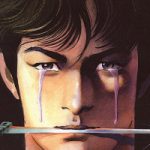Garo
Regions: Japan

Garo is a Japanese monthly comics magazine founded in 1964 by editor and publisher Katsuichi Nagai with the financial help of Japanese comics artist Sanpei Shirato (due to this, Shirato also helped with the editorship). The original idea of Garo was to feature Shirato’s story manga Kamui-den (The Legend of Kamui)—its serialization began in the 4th issue of Garo–but the magazine also functioned as an outlet for unique, innovative, and unorthodox cartoonists. In the 1960s and the early 1970s, Garo attracted not only high teens and young blue-collar workers but also university students, countercultural activists, intellectuals and artists of that time. Even after the end of the serialization of Kamui-den in 1971, it remained an important outlet for unique talents and ambitious artists who attempted to experiment with the comics medium, featuring “literary,” surrealistic, abstract, erotic/grotesque, and absurd gag manga/gekiga. Garo, from its inception to its demise in 2002, consistently strove to expand the horizon of manga expression both in themes and styles, elevating the status of manga into something artistically appealing to mature, adult readers and artists. Its impact went beyond narrowly-defined field of comics.
Arguably, Garo is the first alternative manga magazine in postwar Japan due in major part to the creative freedom Nagai (and Shirato) guaranteed. From the beginning, Garo encourages radical differences from Tezuka-inspired mainstram Japanese postwar manga, featuring the works of Shigeru Mizuki, Yoshiharu Tsuge, Tadao Tsuge, Seiichi Hayashi, Yoshihiro Tatsumi, Maki Sasaki, and others. In the 1970s and 1980s, the magazine fostered the emergence of ambitious female artists, including Hinako Sugiura, Yōko Kondō, Murasaki Yamada, and Shungiku Uchida. It is well-known that, observing the increasing popularity of Garo among mature readers, Tezuka founded his manga magazine COM (1967-1973) in which he contributed his life work, Phoenix series. The impact of Garo went beyond the Japanese comics industry, inspiring art and cultural critics to engage with the comics medium. In 1967, art critic Junzō Ishiko and other cultural critics founded a self-published manga critique magazine, Mangashugi (Mangaism)—its front cover was illustrated by avant-garde artist Genpei Akasegawa—who often took up comics works in Garo.
After Shirato’s Kamui-den series ended, the sales of Garo gradually dropped. In the 1980s while Japan witnessed an economic boom called the “Bubble Economy,” Seirindō financially suffered due to its low sales and could hardly afford to pay royalties to manga artists. Yet, several artists still sent their works to Garo due in major part to its fame and creative freedom. Garo publication rights were eventually bought by a computer software company Zeit (tsaito) in 1990, which prompted a temporary recovery from its sluggish sales, but it eventually discontinued in 2002. Noriko Tetsuka, a former editor of Garo founded Seirin kōgeisha in 1997 that began publishing the manga magazine AX (akkusu, 1998 – ), which is considered to have inherited the alternative proclivity of Garo.
— Shige (CJ) Suzuki
Further Reading
- Holmberg, Ryan. 2010. Garo Manga: The First Decade, 1964–1973. New York: The Center for Book Arts.
- “The Name Garo: Shirato Sanpei and the Indo-Manga Connection” The Comics Journal (online). September 27, 2013. Accessed March 5, 2015. http://www.tcj.com/the-name-garo-shirato-sanpei-and-the-indo-manga-connection/2/
- Schodt, Frederik L. 1996. Dreamland Japan: Writings on Modern Manga. Berkeley, CA: Stone Bridge Press.


